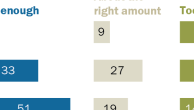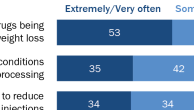Health 2.0: User-Generated Healthcare showcased patient advocates and their use of technology in pursuit of better health. Susannah Fox provided context for the discussion based on a national survey of people living with chronic conditions.
You can also watch Susannah’s speech (below) or an interview (bottom of page) about how Health 2.0 has evolved.
http://cdn.icyou.com/files/flashvideo/flvplayer.swf
An excerpt:
Connected patients spread new ideas, new treatments, and new ways of approaching a condition. Patient networks can help you anticipate change and innovate in the right direction. The time is right for government, business, nonprofits – everyone – to incorporate patients into your work.
Pew Internet surveys show that 8 in 10 Americans have access to the internet. Social media use is trending up. Health is holding steady as one of the most popular activities online. E-patients are listening to each other, consulting hospital reviews and doctor reviews, and posting which treatments work for them.
However, our surveys don’t just bring good news. Only about half of people living with chronic conditions go online. My next report will go into detail, looking at subpopulations: people living with diabetes, heart conditions, high blood pressure, lung conditions, and cancer. Our most vulnerable populations are likely to be offline, but the people in their social networks are likely to be online. And don’t underestimate those loved ones.
One-third of American adults care for their parents or another adult family member. One-third of adults experienced a medical emergency in the past year, either their own or someone else’s. For both those groups, 8 in 10 are online.
A medical crisis flips a switch in people. It makes them want to become superheroes and save a life if they can. The internet is very often their weapon of choice.
Patients and the people who love them are not just your target audience, but your colleagues. They are a resource for innovation and knowledge.
Ask patients what they think. Put them on the team so they can participate in whatever it is you are doing. They will collaborate with you to make it better. Patient networks are an early warning system for whatever you’re building or selling: a new service, a new drug, a new platform.
If you’re not engaging patients, you’re doing it wrong.
An interview with Susannah Fox at Health 2.0:




